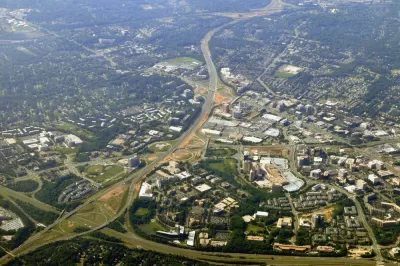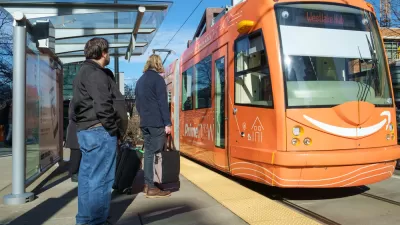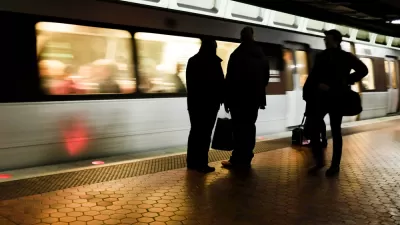Of the many reasons why the suburban lifestyle is falling out of favor with young Americans, reliance on automobiles is near the top of the list. Some suburbs are now figuring out that, to attract Millennials, they must also invest in better transit.

Hard as it may be to imagine, many of the original suburbs arose because of transit. "Streetcar suburbs" were built along trolley lines, whisking commuters from downtowns to leafy bedroom communities. Then came the car and, with it, the vast majority of current suburbs.
Now that younger Americans are not as enamored with cars as they once were, some suburbs are trying to figure out how to embrace transit as those original suburbs once did. Many of the new light rail lines being built across the country, such as those in Denver, Phoenix, and the Washington, D.C., area, are designed to connect suburbs with center cities. In fact, many of these lines are designed to serve a reverse-commute: companies that are located in the suburbs often hire employees who insist on living an urban lifestyle. That's the case in Raleigh-Durham, where a planned light rail line would serve the suburban Research Triangle Park.
"The growing millennial and boomer preference for working and living in more walkable, urban settings is also transforming the traditional suburban office park. Some office-park owners are planning townhouses, restaurants, shops, walking paths and bike lanes to create a town-center feel, even as these spots remain isolated from major transit stations. In places that are years away from new light-rail or rapid bus lines — if they ever get them — upgrades in traditional bus and shuttle service will be necessary to meet changing lifestyles, business leaders say."
FULL STORY: Suburbs such as Montgomery County rethink transit to court millennials

Planetizen Federal Action Tracker
A weekly monitor of how Trump’s orders and actions are impacting planners and planning in America.

Chicago’s Ghost Rails
Just beneath the surface of the modern city lie the remnants of its expansive early 20th-century streetcar system.

San Antonio and Austin are Fusing Into one Massive Megaregion
The region spanning the two central Texas cities is growing fast, posing challenges for local infrastructure and water supplies.

Since Zion's Shuttles Went Electric “The Smog is Gone”
Visitors to Zion National Park can enjoy the canyon via the nation’s first fully electric park shuttle system.

Trump Distributing DOT Safety Funds at 1/10 Rate of Biden
Funds for Safe Streets and other transportation safety and equity programs are being held up by administrative reviews and conflicts with the Trump administration’s priorities.

German Cities Subsidize Taxis for Women Amid Wave of Violence
Free or low-cost taxi rides can help women navigate cities more safely, but critics say the programs don't address the root causes of violence against women.
Urban Design for Planners 1: Software Tools
This six-course series explores essential urban design concepts using open source software and equips planners with the tools they need to participate fully in the urban design process.
Planning for Universal Design
Learn the tools for implementing Universal Design in planning regulations.
planning NEXT
Appalachian Highlands Housing Partners
Mpact (founded as Rail~Volution)
City of Camden Redevelopment Agency
City of Astoria
City of Portland
City of Laramie





























